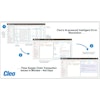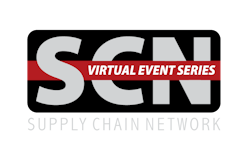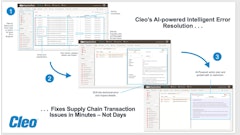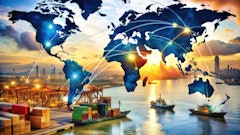
Over the past few months, how many times have you heard “we are living in unprecedented times” or “living in a different normality”? We are experiencing global factory labor shortages, supply chain disruptions due to travel and transport lockdowns, Force Majeure disagreements, suppliers running out of cash, realization of our dependencies on global supply chains that we cannot control, disruption to ways of working due to lockdowns and the uncertainty over the length of current restrictions making effective forward planning extremely difficult.
Fortunately, for many, technology has enabled people to work from home and provide some normality through the COVID-19 epidemic. However, even though many organizations have digitalized their customer front-end services, sadly back-office services have been woefully under-invested (in hardware, software and technology products). And, many organizations have primarily spent time, effort and money to ensure that staff can continue to work during these difficult times by providing the tools and infrastructure to support remote operation.
Supporting the global challenge
Over the last few months, procurement as a function has stepped up to support this global challenge. Social care staff and the millions of health workers across the world have listened to the “call to arms” and mobilized their teams and supply chains. On the other hand, unfortunately, many supply chains have failed, and business continuity plans have not delivered, as the procurement function has simply not been able to cope. This is after those organizations’ procurement functions invested heavily in sophisticated systems for tracking and managing their supply chain.
When COVID-19 hit, many UK-based utility organizations found out that their business continuity plans were not resilient against the unprecedented challenges such as accommodation changes, systems switchover and consumer interface. Furthermore, many offshore BPO organizations struggled with remote working due to bandwidth challenges. Whereas some “challenger” banks had invested in understanding and mapping their supply chains, and were able to instigate a quick and comprehensive review with their suppliers concerning financial viability, delivery capabilities and capacity.
Did the technology fail, or was it the ability of individuals and teams to take the data and make valuable insights to ensure they could deliver for their organizations? Data for data sake is not enough; you need to be able to use that valuable information to move the conversation forward, to support your organization to innovate, and in the current crisis, to save lives.
As a function, the technology and understanding of an organization’s needs is powerful, and the industry should utilize that to drive strong bonds with the individuals that work within our organizations. Procurement technology combined with human knowledge is the mandatory combination to an effective classification and segmentation process and ensures businesses can quickly collate, visualize and action insights from existing data sources.
Connecting procurement technology and people
Connecting people and information guided by intelligent procurement systems can fundamentally change how companies buy and sell and can open broad visibility into the interconnected operations of buyers and suppliers. This also means reduced operational uncertainty as businesses can prevent bottlenecks in the supply chain before they arise. In the long term, it also enables procurement professionals to increasingly focus on strategic priorities as automated procurement solutions can take over their day-to-day tactical activities.
What these times reveal is that we must do more to work on building better understanding of our own organizations’ demands, build sustainable relationships and appreciate new and innovative product and service development. It will make organizations stronger and ensure continuous service and reliability within the supply chain.
Now is the launch pad for great things for the procurement and supply chain function. We need to take the technology, data and insights to build strong and long-lasting relationships that can survive through the good and bad times. We need to stress test our internal and external relationships and drive value and not cost, deliver new products and be the vanguard for change.
Ultimately, what COVID-19 highlights is the good that can be done, and we shine a light on the poor performances, poor process and inability to work collaboratively with people. I sincerely hope that COVID-19 can make us stronger and build on some of the great and good that has been done over the past few months – as this proves we are all human.


















